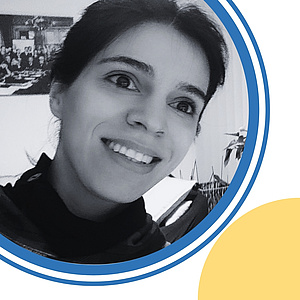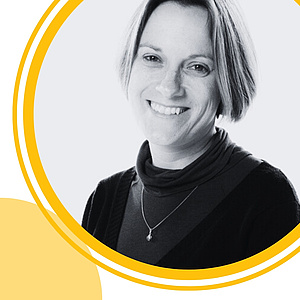GREGOR TRIMMEL

Prof. Trimmel obtained his PhD from the University of Technology in Vienna in 2000. After post-doctoral research stays at the Université Pierre et Marie Curie in Paris and at the University of Padova in Italy, he joined the Institute for Chemistry and Technology of Materials of the Graz University of Technology. In 2019, he was appointed as a full professor. His research focuses on the synthesis of functional polymers and new materials for photovoltaics, with special emphasis on inorganic-organic hybrid solar cells, organic solar cells and perovskite solar cells.
MORTEN MADSEN

Prof. Madsen obtained his PhD in 2009 at the University of Southern Denmark. In 2010, he became a postdoctoral fellow at UC Berkeley, where he worked in the Prof. Ali Javey Research Lab. Since 2022, he has been a Professor at the Mads Clausen Institute (SDU), where he is also the Head of the OPV group and the SDU Roll-to-Roll facility. He is a referee and an expert evaluator for several scientific journals and international projects. His main research interests are within organic and hybrid photovoltaics, including a wide range of material systems and device up-scaling from R2R technology. He holds more than 50 peer-reviewed publications on these topics.
VIDA ENGMANN

Dr. Engmann obtained her Dr. rer. nat. in 2014 from Ilmenau University of Technology. She then joined the University of Southern Denmark (SDU), where she became an associate professor. For her work on additive-assisted stabilization, she received the 2019 L'Oréal-UNESCO For Women in Science and the 2020 International Rising Talent awards. Between 2020 and 2021, she obtained a Carlsberg Young Researcher Fellowship and an Independent Research Fund Denmark Sapere Aude grant. She is a member of the SDU Committee on Diversity and Equality. Her research focuses on bioinspired approaches for stabilising organic semiconductor thin films and energy devices.
MARIANO CAMPOY-QUILES

Dr. Campoy-Quiles gained his PhD from Imperial College London in 2005. Then he obtained a Japan Society for Promotion of Science postdoctoral fellowship (2007), a Ramon y Cajal research fellowship (2009) and a permanent position as a tenured scientist at CSIC (2012). He won several awards and grants, including the Most Outstanding Young Researcher in Experimental Physics Award (from the Spanish Royal Society of Physics and Fundación BBVA) and two ERC PoC grants (2020 and 2022). Now, he leads a group at the Institute of Materials Science of Barcelona (ICMAB) with a focus on solar photovoltaic (light to electric) and thermoelectric (heat to electric) energy conversion.
SAFA SHOAEE

Professor Safa Shoaee's research centres on organic semiconductors, with a particular emphasis on the development of environmentally sustainable solar cells and energy devices. She holds a dual appointment, serving as a professor at the University of Potsdam and leading the Heterostructure Semiconductor Physics group at the Paul-Drude-Institut in Berlin. Shoaee earned her PhD from Imperial College London (ICL) in 2010. Following postdoctoral positions at both ICL and the University of Queensland, she was awarded the Sofja Kovalevskaja Prize, to establish a research group at the University of Potsdam. Her expertise and leadership were further recognised in 2018 when she was appointed associate professor.
IRIS VISOLY-FISHER

After completing her PhD in Materials and Interfaces at the Weizmann Institute in 2004, investigating individual grain boundaries in polycrystalline CdTe solar cells, she moved to Arizona State University as a postdoc. She worked on electrochemical potential-dependent current transport in single biomolecules. In 2008, she joined Ben-Gurion University of the Negev. She has published over 60 papers and supervised more than 35 PhD students. Her research focused on materials for renewable energy generation and storage, photovoltaics, optoelectronics and organic electronics, surface science and characterisation through a "bottom-up" approach - from the properties of a single device to understanding the behaviour of the system. She specialises in accelerated stability testing with concentrated natural sunlight and outdoor lifetime characterisation. In her studies, she has elucidated the mechanisms of photodegradation in organic and photovoltaic perovskite materials and proposed methods to improve their stability. In parallel, she is researching photoelectrodes for the production of fuels using renewable solar energy.
ELLEN MOONS

Prof. Moons gained her PhD from the Weizmann Institute of Science in Israel in 1995. After post-doctoral research stays at Delft University of Technology, École Polytechnique Fédérale de Lausanne, and University of Cambridge, and an appointment as research scientist at Cambridge Display Technology Ltd, she joined Karlstad University in Sweden as assistant professor in Physics, where she in 2011 was promoted to Professor of Physics. She was awarded the Göran Gustafsson prize for Physics in 2011 for her work on organic solar cells and was elected member of the Swedish Royal Academy of Sciences in 2017. Now she leads a research group at Karlstad university with focus on microscopy and spectroscopy characterisation of solution-processed materials for organic and perovskite solar cells.
HEINZ AMENITSCH

Heinz Amenitsch is an Associate Professor at the Graz University of Technology, where he leads the scattering team at the Institute of Inorganic Chemistry. He earned his PhD in the field of Neutron Small Angle Scattering in 1992. After, Dr. Amenitsch joined the Institute of Biophysics and Nanosystems Research at the Austrian Academy of Sciences, under the leadership of Professor Laggner. He played a crucial role in the construction of the Austrian Small Angle X-ray Scattering Beamline at the electron storage ring ELETTRA in Trieste and has been involved in its operation since its commissioning in 1996. He has also served as director of the Austrian partner facility in the Board of Directors and the General Assembly CERIC-ERIC since 2014. Lately he became the Chair of the Board of Directors in December 2023. His work has been recognized through numerous grants, a testament to his contributions to the field of physics and his commitment to advancing scientific understanding and application of material sciences. His notable achievements include the implementation of nanoanalytics tools, development of the theory and technique for small angle X-ray scattering applications, and innovations such as the use of microfluidics, in situ aerosol techniques, combination of optical tweezers with small angle scattering as well as with ps-pump probe experiments for structural characterizations.
CHRISTOPH J. BRABEC

Christoph J. Brabec holds the chair “materials for electronics and energy technology (i-MEET)” at the Friedrich Alexander University Erlangen-Nürnberg. He is also the scientific director at the Helmholtz Institute Erlangen-Nuremberg for Renewable Energies. He is author and co-author of more than 600 papers and nearly 100 patents and patent applications and has a Hirsch index of > 100. His research is focused on solution-processed photovoltaics for emerging materials (organic and perovskites) tackling the crucial challenges of these material classes, namely performance on the long term and industrial upscaling, in a high throughput paradigm.
THOMAS HEUMÜLLER

Thomas Heumüller received his PhD degree in Materials Science from the Friedrich-Alexander University Erlangen-Nürnberg, Germany. He is currently a group leader at the Institute of Materials for Electronics and Energy Technology (i-MEET). OPV device stability, high throughput processing and electro-optical characterization techniques are among his research interests.
GIULIANA AQUILANTI

Giuliana Aquilanti is the head of beamlines XAFS and XRF and coordinator of the Research Projects cluster at Italian synchrotron in Trieste (Elettra). She received her PhD in Physics at the University Joseph Fourier (Grenoble, France). The research carried out over the last 20 years concerns the development and application of x-ray techniques (mainly x-ray absorption spectroscopy) for the study of matter and was carried out at the European Synchrotron in Grenoble (ESRF) and at Elettra. Her research activity is devoted to two main themes: (a) structural characterization of advanced materials for energy storage, and (b) structural characterization of matter under extreme pressure and temperature conditions. She coordinates the scientific activity of the XAFS and XRF beamlines staff, and she supervises fellows within different programs of ICTP, IAEA and IUCr. She is involved in different research projects funded by EU, IAEA and CERIC-ERIC. She has co-authored more than 200 scientific articles.
HARALD OBERHOFER

Harald Oberhofer holds the Chair for Theoretical Physics VII at the University of Bayreuth. He obtained his PhD from the University of Vienna in 2008 and went on to a Post-doctoral research stay at the University of Cambridge, UK.
In 2011 he became a group leader at the Chair for Theoretical Chemistry at the Technical University of Munich, where he completed his Habilitation in 2017.
In 2021 he was appointed to a full professorship at the University of Bayreuth. His research interests centre on the study of charge transport in energy materials by means of first-principles simulations aided, where necessary, by machine learned surrogate modelling.
MARKUS SCHARBER

Markus Scharber is currently Associate Professor at the Johannes Kepler University Linz, Austria. He studied physics at the Johannes Kepler University Linz and at the Napier University, Edinburgh, Scotland. In 2002 he received a PhD from the Linz Institute for Organic Solar Cells. From 2002 until early 2012 he was working at Konarka Technologies Inc. heading among other responsibilities the Material and Device Development Group. His research interests are fundamental processes in novel semiconductor materials focusing on applications for energy harvesting and detection.

